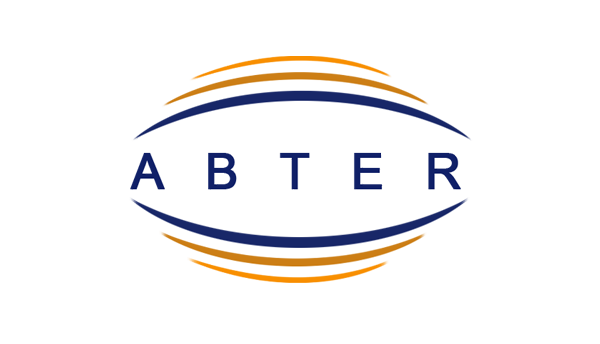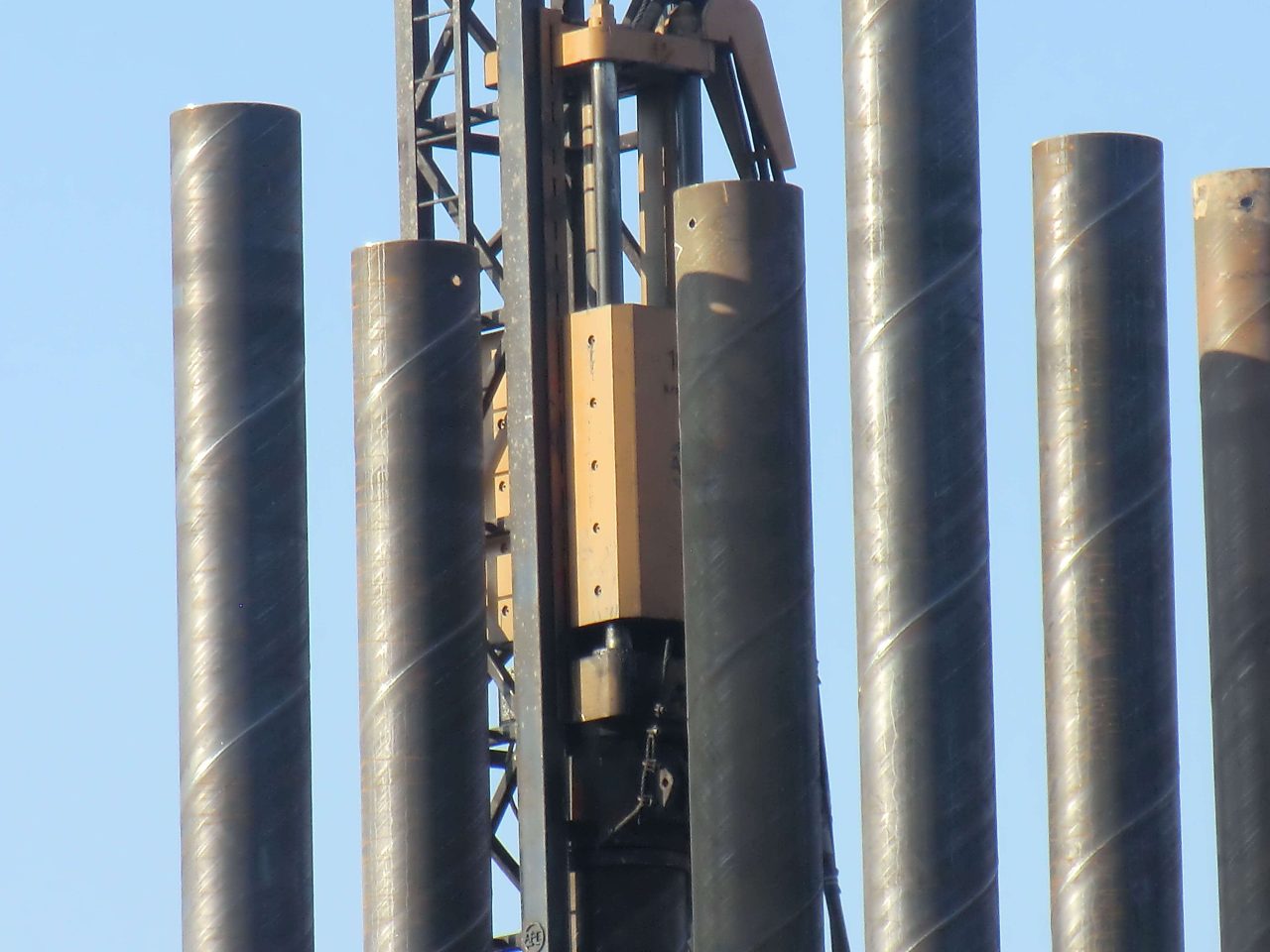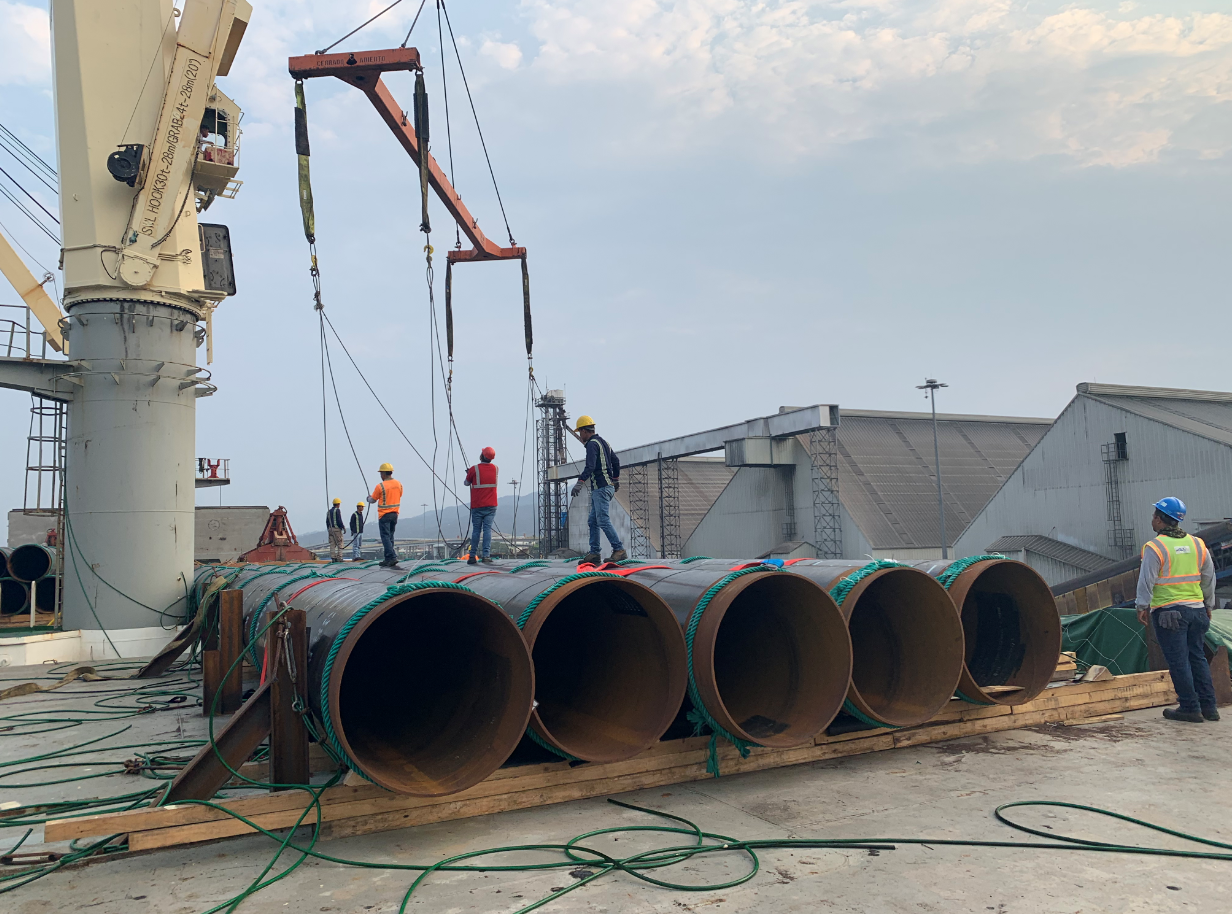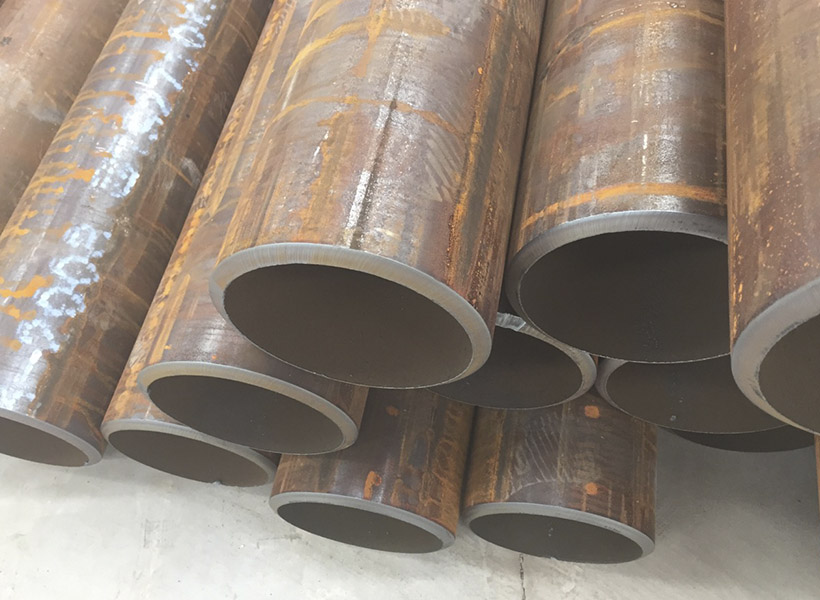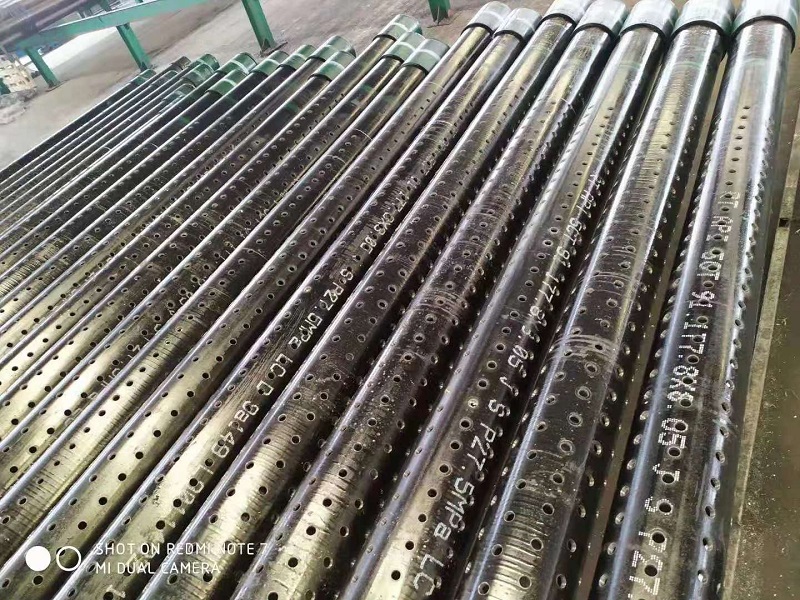In-Depth Analysis of Steel Bend Pipe Roof Trusses in Long-Span Structures (Continued)
Advanced Connection Design and Joint Efficiency
The efficiency of steel bend pipe roof trusses in long-span structures heavily relies on the design and execution of their connections.
Joints in bend treliças de tubos,
particularly at chord-web intersections,
are critical points where stresses concentrate.
Common connection types include welded intersecting nodes,
bolted flange connections,
and sleeve joints.
Welded nodes,
where pipes are directly joined by full-penetration welds,
offer superior stiffness and a clean aesthetic but require high precision to avoid defects like incomplete fusion or porosity.
According to BS EN 1993-1-8,
the design strength of welded joints must account for the reduced effective area due to weld imperfections,
typically limiting stresses to 80–90% of the parent material’s yield strength (por exemplo., 284
–320 MPa for Q355B steel).
Bolted connections, using high-strength bolts (por exemplo., nota 10.9 or ASTM A325), are preferred for prefabricated trusses due to their ease of assembly and ability to accommodate slight misalignments. No entanto, they introduce additional weight from flange plates, increasing steel usage by 5–10% compared to welded nodes. A 40-meter span truss with bolted connections reported a 7% increase in self-weight but reduced on-site erection time by 20%. Sleeve joints, where pipes are inserted into pre-fabricated connectors, offer flexibility for complex geometries but require tight tolerances (≤0.5 mm) to ensure load transfer. Finite element analysis of a 50-meter span truss showed that welded intersecting nodes reduced stress concentrations by 15% compared to bolted joints, enhancing fatigue life under cyclic loading.
To optimize joint efficiency, designers can employ advanced techniques like stiffened nodes or cast steel connectors. Por exemplo, cast steel nodes, used in the Beijing National Stadium, increased joint stiffness by 25% and allowed for intricate geometries, though at a 30% cost premium. Inovações futuras, such as hybrid joints combining welding and bolting, could further balance strength and constructability.
Aerodynamic Performance and Wind Load Mitigation
Long-span roof trusses,
especially those exposed to open environments,
must withstand significant wind loads,
which can govern design in regions with high wind speeds (por exemplo., 30
–50 m/s).
Trelas de tubo de dobrar,
with their circular cross-sections,
offer aerodynamic advantages over angular sections due to lower drag coefficients (
C_d ≈ 0.7
for CHS vs. 1.2
–2.0 for I-beams).
Wind tunnel tests on a 60-meter span truss indicated a 20%
reduction in wind-induced forces for circular sections compared to square hollow sections (SHS),
reducing the need for secondary bracing.
No entanto, vortex shedding, a phenomenon where alternating vortices form behind the pipe, can induce vibrations at frequencies of 0.1–1.0 Hz, particularly for slender members with high slenderness ratios (λ > 100). Para mitigar isso, tuned mass dampers (TMDs) or viscoelastic dampers can be integrated into the truss system. A case study of a 70-meter span roof in a coastal region showed that installing TMDs reduced wind-induced deflections by 30%, maintaining displacements within 1/400 do período. Adicionalmente, computational fluid dynamics (CFD) modeling can optimize truss spacing and roof curvature to minimize uplift forces, which can reach 1.5–2.0 kPa per ASCE 7-16 for low-slope roofs.
|
|
Trelia de tubo de dobra (Chs)
|
Seção Holada quadrada (SHS)
|
|
|
|
|
|
|
|
|
|
|
|
Vortex Shedding Frequency (Hz)
|
|
|
|
Mitigation Cost (% of total)
|
|
|
|
This table underscores the aerodynamic superiority of bend treliças de tubos,
though mitigation measures like dampers or streamlined cladding add to project costs.
Fatigue and Long-Term Durability
Fatigue performance is a critical consideration for bend pipe trusses subjected to cyclic loading, such as wind, crowd, or equipment-induced vibrations. The fatigue life of welded joints, particularly at intersecting nodes, is governed by stress concentrations and weld quality. According to Eurocode 3, the fatigue strength of CHS joints is categorized into detail classes (por exemplo., Class 71 for welded CHS), with a fatigue limit of approximately 71 MPA para 2 million cycles. A 45-meter span truss subjected to 1.0 kN/m² cyclic live loads exhibited stress ranges of 50–60 MPa at critical nodes, well within acceptable limits.
To enhance durability, surface treatments like shot peening can reduce residual stresses by 10–15%, extending fatigue life by up to 30%. Corrosion protection is equally important, especially for outdoor trusses. Galvanização a quente, with a coating thickness of 85–100 μm, provides a service life of 50–70 years in C3 environments (moderate corrosivity, per ISO 12944). For harsher C5 environments (por exemplo., industrial or marine settings), duplex systems combining galvanizing and epoxy coatings are recommended, though they increase costs by 20–25%. Inspeções regulares, facilitated by access platforms integrated into the truss design, ensure early detection of corrosion or fatigue cracks.
Economic Analysis and Cost Optimization
The economic viability of bend pipe trusses depends on balancing initial fabrication costs with long-term savings from reduced material usage and maintenance. For a 50-meter span truss, fabrication costs for bend pipes are approximately 10–20% higher than for straight HSS trusses due to specialized bending and welding processes. No entanto, the overall project cost is often comparable or lower due to a 15–25% reduction in steel tonnage. Por exemplo, a 36-meter span truss in an exhibition hall used 62 kg/m² of steel, compared to 80 kg/m² for a conventional angle truss, resulting in material cost savings of $50,000–$70,000 for a 10,000 m² roof.
Prefabrication and modular assembly further reduce costs by minimizing on-site labor, which accounts for 30–40% of total expenses in traditional construction. A modular 40-meter span truss system reduced erection time by 25%, saving approximately $20,000 in labor costs. No entanto, transportation of large, curved components can increase logistics costs by 5–10%, necessitating careful planning of module sizes. Advanced cost optimization tools, such as BIM-integrated cost estimation software, can predict total expenses with 95% precisão, enabling better decision-making.
Estudo de caso: Large-Scale Implementation
The Shenzhen Bao’an International Airport Terminal, with its 80-meter span roof, exemplifies the successful application of bend pipe trusses. The structure utilized CHS pipes (diâmetro 300 milímetros, espessura da parede 12 milímetros) bent to a radius of 3D, achieving a steel consumption of 58 kg/m². The truss system, Suportado por colunas em forma de árvore, accommodated complex roof curvatures while maintaining deflections below 1/350 do período (229 milímetros). Automated welding and CNC cutting ensured joint precision, reducing fabrication errors to less than 1 milímetros. The project reported a 15% cost saving compared to a proposed space frame alternative, primarily due to reduced material usage and faster erection.
This case highlights the synergy of aesthetic flexibility, eficiência estrutural, and economic benefits in bend pipe trusses. No entanto, challenges included the need for specialized bending equipment and skilled welders, which increased initial costs by 12%. These were offset by long-term savings from lower maintenance and high durability, with the galvanized coating ensuring a 60-year service life.
Future Directions: Digital and Smart Technologies
The integration of digital technologies is transforming the design and fabrication of bend pipe trusses. Digital twins, created using BIM and real-time sensor data, allow for continuous monitoring of structural health, detecting stress anomalies with 98% precisão. Por exemplo, a 60-meter span truss equipped with strain gauges and IoT sensors identified a 5% increase in stress at a critical node during a typhoon, enabling preemptive reinforcement. Parametric design tools, such as Grasshopper, enable rapid iteration of truss geometries, optimizing for weight and cost while meeting architectural requirements.
Additive manufacturing (3D printing) of steel nodes is another promising trend. A pilot project in Dubai used 3D-printed CHS nodes for a 30-meter span truss, reduzindo o tempo de fabricação por 35% and material waste by 20%. Adicionalmente, the use of machine learning to predict buckling modes and optimize pipe dimensions could reduce steel usage by 5–10% in future designs. These advancements, combined with sustainable practices like low-carbon steel production, position bend pipe trusses as a cornerstone of next-generation long-span structures.
Conclusão
Steel bend treliças do telhado de tubo offer unparalleled advantages for long-span structures, Combinando eficiência estrutural, versatilidade estética, e benefícios econômicos.
Their ability to reduce material usage,
resist complex loads,
and accommodate innovative designs makes them ideal for modern architectural challenges. No entanto,
their success depends on precise fabrication,
rigorous quality control,
and advanced design tools.
As digital technologies and sustainable practices continue to evolve,
bend pipe trusses will play an increasingly vital role in shaping the future of structural engineering,
delivering safe, durável,
and visually striking solutions for large-scale projects.
